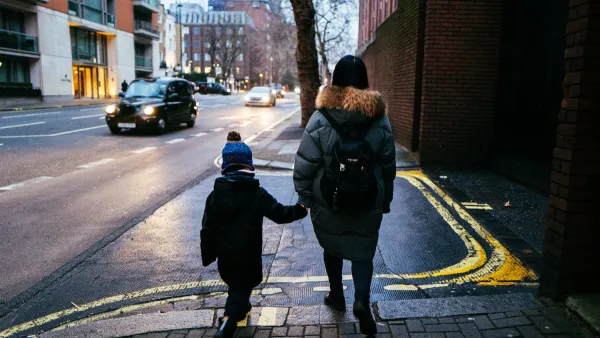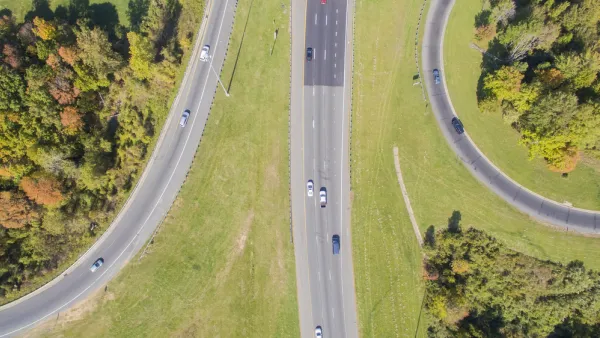As Britain confronts the silent epidemic of inactivity and obesity, Peter Walker examines how the invisible dangers of a sedentary lifestyle are compared to the more publicized risk of injury from activities designed to get people moving.
This week in Britain, the National Institute for Health and Clinical Excellence (Nice) released a stark report that finds, "almost two-thirds of men and nearly three-quarters of women in England are not sufficiently active to maintain their health, with the results little better for children," reports Walker. And as a solution to "a national epidemic of inactivity and obesity which now causes as much harm as smoking," the report's authors recommend that, "[w]alking and cycling should become the norm for short journeys rather than driving a car."
While the findings of the report are certainly dire, Walker seems equally astonished by one of the questions asked during the press conference in which the results and recommendations were announced. "One of the first was on cycle safety: had they taken into account the potential perils of riding a bike?" Some, it seems, are more fearful of the solution than the problem itself.
Walker quotes the answer to the question given by Dr Harry Rutter, lead author of the report and an adviser at the National Obesity Observatory: "All activities carry a risk...This focus on the dangers of cycling is something to do with the visibility of them, and the attention it's given. What we don't notice is that if you were to spend an hour a day riding a bike rather than being sedentary and driving a car there's a cost to that sedentary time. It's silent, it doesn't get noticed. What we're talking about here is shifting the balance from that invisible danger of sitting still towards the positive health benefits of cycling."
"People go on at exhaustive length about the perils of cycling because cycling remains niche," says Walker. "Sitting around on one's arse watching EastEnders and eating Pringles is, however, a national pursuit, and not enough people make the connection between that and an impact on health which is, the scientists told us, now on a par with that from smoking."
FULL STORY: Which really is more deadly: cycling or sitting down watching TV?

National Parks Layoffs Will Cause Communities to Lose Billions
Thousands of essential park workers were laid off this week, just before the busy spring break season.

Retro-silient?: America’s First “Eco-burb,” The Woodlands Turns 50
A master-planned community north of Houston offers lessons on green infrastructure and resilient design, but falls short of its founder’s lofty affordability and walkability goals.

Delivering for America Plan Will Downgrade Mail Service in at Least 49.5 Percent of Zip Codes
Republican and Democrat lawmakers criticize the plan for its disproportionate negative impact on rural communities.

Test News Post 1
This is a summary

Test News Headline 46
Test for the image on the front page.

Balancing Bombs and Butterflies: How the National Guard Protects a Rare Species
The National Guard at Fort Indiantown Gap uses GIS technology and land management strategies to balance military training with conservation efforts, ensuring the survival of the rare eastern regal fritillary butterfly.
Urban Design for Planners 1: Software Tools
This six-course series explores essential urban design concepts using open source software and equips planners with the tools they need to participate fully in the urban design process.
Planning for Universal Design
Learn the tools for implementing Universal Design in planning regulations.
EMC Planning Group, Inc.
Planetizen
Planetizen
Mpact (formerly Rail~Volution)
Great Falls Development Authority, Inc.
HUDs Office of Policy Development and Research
NYU Wagner Graduate School of Public Service




























